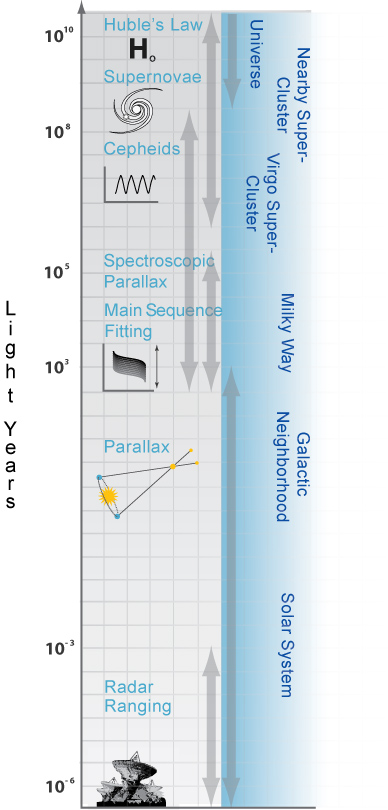Summation

The progression of distance determination techniques surveyed in this lab is collectively known as the Cosmic Distance Ladder. No one technique is effective at all distances and typically techniques useful at small distances are used to calibrate those used on objects at greater distances. Thus, one rung on the ladder allows astronomers to step to the next rung.
As a first example of this, think about RR Lyrae stars. A number of RR Lyraes have been observed by the Hipparcos satellite which has determined accurate distances to them. It is easy to observe the apparent magnitudes of these stars and when they are combined with the known distances, the absolute magnitudes can be determined. This procedure allowed astronomers to see that all RR Lyrae have absolute magnitudes around 0.5. Astronomers can now calculate the distance to RR Lyraes beyond Hipparcos' range using the distance modulus. When astronomers find RR Lyraes in the Large Magallenic Cloud, they can be used to calibrate the Period-Luminosity relation for Cepheids observed there. Similarly, when Type I supernovae in nearby galaxies with Cepheids in them (and thus known distances) were observed, the absolute magnitude of the supernova peak brightness was determined. Thus, a variety of distance determination techniques allow us to – one step at a time – learn the distances to ever more distant objects.